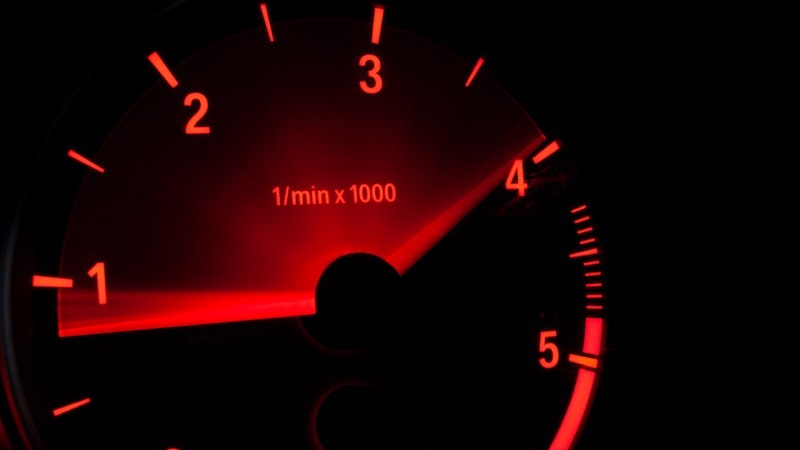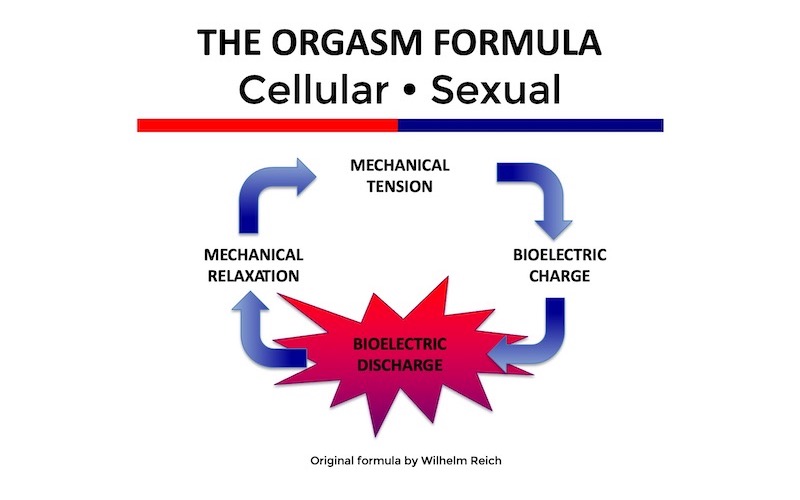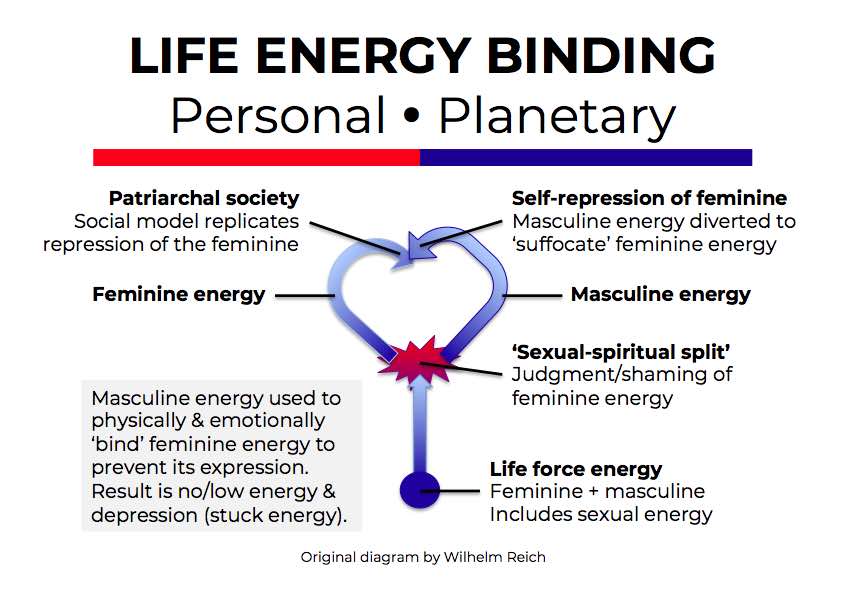What is sexual energy?
- 29 September 2021
- Posted by: Michael H Hallett
- Category: Cornerstones , Sexuality ,

What is sexual energy?
It may seem like an odd question, an obvious question, even an unnecessary question. Yet it is the question that unlocks answers to some of life’s deepest mysteries.
Sexual energy is high-octane, high-rev life energy colliding with the ‘red line’ of sexual shame.
What is sexual energy?
What is the energy of sexual arousal? For many people, the experience is deeply desired and attractive, yet at the same time it can be a highly volatile experience with a sense of transgression, guilt, and shame. For others, it’s an unattractive experience that’s consciously or unconsciously avoided. It may be associated with physical and moral impurity, even degradation.
We call this energy ‘libido’. I use the phrase sexual energy because I want to focus on the energy behind sexualarousal rather than the effects of arousal. Wikipedia describes it as follows:
“Libido is a person’s overall sexual drive or desire for sexual activity. In psychoanalytic theory libido is psychic drive or energy… Libido is influenced by biological, psychological factors… Psychologically, a person’s urge can be repressed or sublimated.”
The term originates with Sigmund Freud, who defines it as “the energy, regarded as a quantitative magnitude… of those instincts which have to do with all that may be comprised under the word ‘love’.”
A “quantitative magnitude” of love… libido is an innate sexual desire that varies individually, which may be altered through internal and external conditioning. Wikipedia adds that “there is no widely accepted measure of what is a healthy level for sex desire.”
Wilhelm Reich
Wilhelm Reich, an early psychoanalyst and student of Freud’s, conducted experiments in the 1930s and 40s that shed light on sexual energy.
Reich found that skin conducts electricity. He recorded the measurements on an oscillograph, a device that translates readings from an electrode into data points on a paper roll. He found that electrical conductivity was relatively constant all over the body.
Relatively, but not entirely: “There are certain parts of the surface where the reaction is fundamentally different… These are the erogenous zones… Oscillations of up to 50mv and more can be observed in the sexual zones.”
These oscillations always occurred during sexual arousal. Yet, crucially, sexual arousal did not always produce oscillations. “The [electrical] potential at an erogenous zone does not increase unless a streaming sensation of pleasure is experienced at that zone.” (Wilhelm Reich, his italics)
Test subjects who were emotionally detached and cold experienced physical arousal. But if they didn’t feel a streaming sensation of physical pleasure, they didn’t feel increased life energy—and, with it, sensations of emotional pleasure and life satisfaction.
Reich’s findings have two significant ramifications.
Bioelectric energy
The first of these is that, to quote Reich, “The sexual process, i.e., the expansive process of biological pleasure, is the productive life process per se.”
Reich describes how our cells constantly pulse—this is literally the ‘pulse of life’. Live cells pulse; dead cells don’t. This pulsing isn’t fully understood (Wikipedia notes that “there is currently no consensus regarding the definition of life”) but it’s a form of bioelectric energy or current.
This pulsing occurs via a four-step dance between the physical cell and the bioelectric current that animates it:
 While this pulsing continues, we’re alive. When it stops, we die.
While this pulsing continues, we’re alive. When it stops, we die.
Reich’s experiments demonstrate that sexual arousal is nothing other than an increase or acceleration of life energy above its regular homeostatic level.
The life tachometer
Reich notes that “since the life process and the sexual process are one and the same, it goes without saying that sexual, vegetative energy is active in everything that lives.” (Reich’s italics)
The question ‘what is sexual energy?’ has morphed into the question ‘what is life?’
We can think of life energy as a tachometer measuring the bioelectric discharge from our cells. When we’re in a low energy, depressed state, we’re close to stalling. When we sleep, we’re idling. When we’re going about our day, the revs are picking up. We do some exercise—and the revs are building.
When we have sex, our life energy rises to a screaming climax.
That’s when we hit the red line—the highest level of bioelectric discharge we can handle.
Sexual shame
That brings us to the second of Reich’s significant findings. His oscillograph experiments clinically demonstrate the presence and impact of sexual shame.
Reich found that when people who were emotionally detached and frigid became sexually aroused, they responded physically but not bioelectrically. Instead of experiencing more life pleasure, they felt less: they experienced anxiety and were eager for the sexual stimulation to cease.
From this, Reich postulated that “Sexuality and anxiety are functions of the living organism operating in opposite directions: pleasurable expansion and anxious contraction.”
Sexual energy, then, is high-octane, high-rev life energy colliding with the ‘red line’ of shame.
When shame is released, sexual energy changes into a deep, slow, luscious energy without the nerve-jangling, anxiety-inducing taint of transgression.
The orgasm formula
Even though the four-step process of mechanical tension, bioelectric charge, bioelectric discharge, and mechanical relaxation continually happens in our cells, Reich called it the ‘orgasm formula’.
An orgasm is nothing other than the same cellular cycle happening at a macro level. Physical stimulation (whether foreplay or penetration) drives physical arousal, which fuels the bioelectric charge (energetic arousal). The energetic discharge occurs at orgasm, leading to energetic and physical relaxation.
The amount of bioelectric discharge—sexual pleasure—depends on how high the revs rise before shame short-circuits the sex and causes the bioelectric voltage to fall. Premature ejaculation is the most obvious form of a rev-limiter kicking in to reduce shame and anxiety.
In his clinical practice, Reich found that the unconscious short-circuiting of life energy didn’t just happen by suppressing or repressing libido. It was happening constantly at the micro, cellular level and was a core source of neurosis in his clients: “The energy source of the neurosis is created by the difference between the accumulation and discharge of sexual energy.”
The same inhibition that occurred during sex occurred at the cellular level in every moment.
Patriarchy
The four-step orgasm formula involves both the masculine and feminine aspects of our being. The mechanical steps are the rational, masculine stages—the bits that science has figured out. The bioelectrical steps are the irrational, feminine steps—the pieces we don’t have a clue about, the mysterious threshold between life and death.
Depending on our level of sexual shame, increasing bioelectric output increases anxiety. Because we unconsciously associate bioelectricity—life energy—with the feminine, we unconsciously associate this anxiety with the feminine and then stigmatize the feminine in all its forms.
Result: the anxiety laden, neurotic, sex-negating, anti-female social structure we call ‘civilization’.
Reich: “The character structure of modern man, who reproduces a six-thousand-year-old patriarchal authoritarian culture, is typified by… armouring against his inner nature and against the social misery which surrounds him. This… armouring is the basis of isolation… fear of responsibility, mystic longing, sexual misery, and neurotically impotent rebelliousness…”
Wilhelm Reich concludes that “Man has alienated himself from, and has grown hostile toward, life.”
Energy binding
What happens to this neurotic energy, “the difference between the accumulation and discharge” of life energy? It becomes trapped in an unconscious process that psychoanalysis calls energy binding.
Socially acceptable masculine energy is diverted away from productive work capacity and enjoyable social activity. Instead, it’s used to suffocate or stymy the unacceptable, shameful, anxiety-generating feminine life energies.

Reich notes with some bitterness that, “Genital energy was bound, concealed, and disguised in many places and in myriad ways. The official world had banned this subject.”
Tellingly, there is no mention of Reich’s experiments in Wikipedia. He was cancelled long before the term even existed. He remains the bad boy of the natural sciences precisely because he understood “the fundamental identity between [the] sexual process and life process.”
Our longing for sex masks an unrecognised longing for life in all its fullness. While we fail to understand sexual energy, we fail to understand—and fully experience—life.
Next steps
For further resources on sexuality, both free and paid, please click on this image.
Photo by Matthias Speicher on Unsplash

